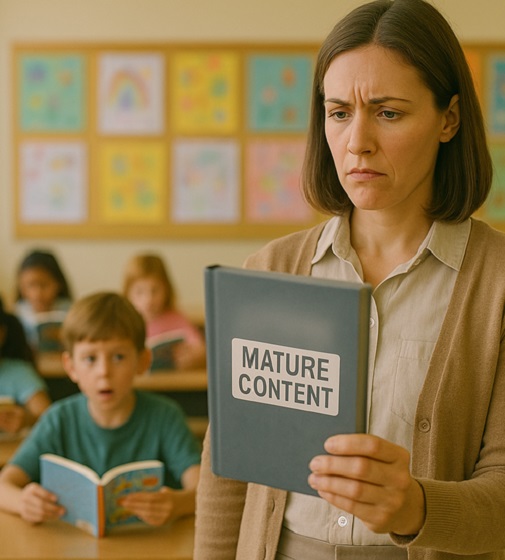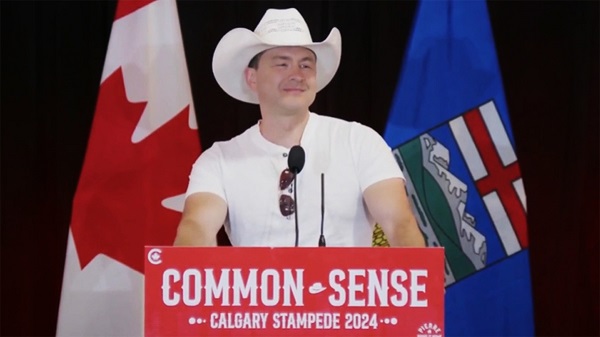Business
Charlottetown cabinet retreat cost taxpayers almost half-a-million

From the Canadian Taxpayers Federation
Author: Ryan Thorpe
“Spending more than four hundred grand on a three-day retreat to tackle affordability is tone-deaf and unacceptable”
Prime Minister Justin Trudeau’s three-day cabinet retreat to Prince Edward Island last summer cost taxpayers at least $412,000, according to government records obtained by the Canadian Taxpayers Federation.
Figures contained within online proactive disclosures, discovered by the National Post, increased the total cost of the cabinet retreat to $485,196.
Trudeau and his cabinet ministers gathered at a waterfront hotel in Charlottetown, P.E.I., from Aug. 21-23, 2023. The retreat was aimed at tackling the affordability and housing crises facing Canadians.
Expenses from the retreat include $100,000 worth of hotel rooms, $22,000 spent on food and drink, and a $52,000 “banquet.”
“Spending more than four hundred grand on a three-day retreat to tackle affordability is tone-deaf and unacceptable,” said Franco Terrazzano, CTF Federal Director. “Canadians don’t need politicians wasting this type of money, we need them to stop raising taxes that make life more expensive.”
At the cabinet retreat, Trudeau claimed they were “rolling up our sleeves to talk about affordability, to talk about economic growth for everyone, to talk about how we’re going to solve some of the housing challenges.”
Ministers also heard a presentation from the head of the B.C. thinktank Generation Squeeze, a leading proponent of the federal government implementing a home-equity tax. A home-equity tax would tax the money Canadians receive when selling their home.
“It seems like the Trudeau government’s only solution on affordability is to waste other people’s money flying around the country talking to each other,” Terrazzano said. “It’s a shame they don’t have offices in Ottawa, or Zoom accounts, so they could do some of this work without spending thousands of dollars.”
The records obtained by the CTF were released in response to an order paper question from member of Parliament Tracy Gray (Kelowna-Lake Country).
“Expenditures related to the cabinet retreat are as Nov. 27, 2023,” according to the records. “Some travel claims may still be outstanding. As a result, expenditures related to the cabinet retreat may increase slightly.”
The Charlottetown retreat was held nearly a year after the Trudeau government organized an earlier cabinet retreat in Vancouver, which was billed as an anti-inflation summit.
The three-day Vancouver retreat cost taxpayers more than $275,000, and saw Trudeau and his ministers drop tens of thousands of dollars at a café serving up an $88 “millionaire’s cut” steak and lobster plate.
During a press conference on the final day of the Charlottetown retreat, Trudeau acknowledged Canadians are “really worried” about the state of the country and “looking to blame anyone they can for it.”
“So yeah, it’s not an easy time to be a politician,” Trudeau said.
Trudeau announced no new plans to address the affordability or housing crises during the retreat.
“So yeah, it’s not an easy time to be a taxpayer,” Terrazzano said.
Business
Trump confirms 35% tariff on Canada, warns more could come

Quick Hit:
President Trump on Thursday confirmed a sweeping new 35% tariff on Canadian imports starting August 1, citing Canada’s failure to curb fentanyl trafficking and retaliatory trade actions.
Key Details:
- In a letter to Canadian Prime Minister Mark Carney, Trump said the new 35% levy is in response to Canada’s “financial retaliation” and its inability to stop fentanyl from reaching the U.S.
- Trump emphasized that Canadian businesses that relocate manufacturing to the U.S. will be exempt and promised expedited approvals for such moves.
- The administration has already notified 23 countries of impending tariffs following the expiration of a 90-day negotiation window under Trump’s “Liberation Day” trade policy.
Diving Deeper:
President Trump escalated his tariff strategy on Thursday, formally announcing a 35% duty on all Canadian imports effective August 1. The move follows what Trump described as a breakdown in trade cooperation and a failure by Canada to address its role in the U.S. fentanyl crisis.
“It is a Great Honor for me to send you this letter in that it demonstrates the strength and commitment of our Trading Relationship,” Trump wrote to Prime Minister Mark Carney. He added that the tariff response comes after Canada “financially retaliated” against the U.S. rather than working to resolve the flow of fentanyl across the northern border.
Trump’s letter made clear the tariff will apply broadly, separate from any existing sector-specific levies, and included a warning that “goods transshipped to evade this higher Tariff will be subject to that higher Tariff.” The president also hinted that further retaliation from Canada could push rates even higher.
However, Trump left the door open for possible revisions. “If Canada works with me to stop the flow of Fentanyl, we will, perhaps, consider an adjustment to this letter,” he said, adding that tariffs “may be modified, upward or downward, depending on our relationship.”
Canadian companies that move operations to the U.S. would be exempt, Trump said, noting his administration “will do everything possible to get approvals quickly, professionally, and routinely — In other words, in a matter of weeks.”
The U.S. traded over $762 billion in goods with Canada in 2024, with a trade deficit of $63.3 billion, a figure Trump called a “major threat” to both the economy and national security.
Speaking with NBC News on Thursday, Trump suggested even broader tariff hikes are coming, floating the idea of a 15% or 20% blanket rate on all imports. “We’re just going to say all of the remaining countries are going to pay,” he told Meet the Press moderator Kristen Welker, adding that “the tariffs have been very well-received” and noting that the stock market had hit new highs that day.
The Canadian announcement is part of a broader global tariff rollout. In recent days, Trump has notified at least 23 countries of new levies and revealed a separate 50% tariff on copper imports.
“Not everybody has to get a letter,” Trump said when asked if other leaders would be formally notified. “You know that. We’re just setting our tariffs.”
Business
Trump slaps Brazil with tariffs over social media censorship

From LifeSiteNews
By Dan Frieth
In his letter dated July 9, 2025, addressed to President Luiz Inácio Lula da Silva, Trump ties new U.S. trade measures directly to Brazilian censorship.
U.S. President Donald Trump has launched a fierce rebuke of Brazil’s moves to silence American-run social media platforms, particularly Rumble and X.
In his letter dated July 9, 2025, addressed to President Luiz Inácio Lula da Silva, Trump ties new U.S. trade measures directly to Brazilian censorship.
He calls attention to “SECRET and UNLAWFUL Censorship Orders to U.S. Social Media platforms,” pointing out that Brazil’s Supreme Court has been “threatening them with Millions of Dollars in Fines and Eviction from the Brazilian Social Media market.”


Trump warns that these actions are “due in part to Brazil’s insidious attacks on Free Elections, and the fundamental Free Speech Rights of Americans,” and states: “starting on August 1, 2025, we will charge Brazil a Tariff of 50% on any and all Brazilian products sent into the United States, separate from all Sectoral Tariffs.” He also adds that “Goods transshipped to evade this 50% Tariff will be subject to that higher Tariff.”
Brazil’s crackdown has targeted Rumble after it refused to comply with orders to block the account of Allan dos Santos, a Brazilian streamer living in the United States.
On February 21, 2025, Justice Alexandre de Moraes ordered Rumble’s suspension for non‑compliance, saying it failed “to comply with court orders.”
Earlier, from August to October 2024, Moraes had similarly ordered a nationwide block on X.
The court directed ISPs to suspend access and imposed fines after the platform refused to designate a legal representative and remove certain accounts.
Elon Musk responded: “Free speech is the bedrock of democracy and an unelected pseudo‑judge in Brazil is destroying it for political purposes.”
By linking censorship actions, particularly those targeting Rumble and X, to U.S. trade policy, Trump’s letter asserts that Brazil’s judiciary has moved into the arena of foreign policy and economic consequences.
The tariffs, he makes clear, are meant, at least in part, as a response to Brazil’s suppression of American free speech.
Trump’s decision to impose tariffs on Brazil for censoring American platforms may also serve as a clear signal to the European Union, which is advancing similar regulatory efforts under the guise of “disinformation” and “online safety.”
With the EU’s Digital Services Act and proposed “hate speech” legislation expanding government authority over content moderation, American companies face mounting pressure to comply with vague and sweeping takedown demands.
By framing censorship as a violation of U.S. free speech rights and linking it to trade consequences, Trump is effectively warning that any foreign attempt to suppress American voices or platforms could trigger similar economic retaliation.
Reprinted with permission from Reclaim The Net.
-

 International2 days ago
International2 days agoSecret Service suspends six agents nearly a year after Trump assassination attempt
-

 Bruce Dowbiggin1 day ago
Bruce Dowbiggin1 day agoThe Covid 19 Disaster: When Do We Get The Apologies?
-

 Crime22 hours ago
Crime22 hours agoSweeping Boston Indictment Points to Vast Chinese Narco-Smuggling and Illegal Alien Labor Plot via Mexican Border
-

 Alberta1 day ago
Alberta1 day agoAlberta school boards required to meet new standards for school library materials with regard to sexual content
-

 Business2 days ago
Business2 days agoWEF-linked Linda Yaccarino to step down as CEO of X
-

 Automotive2 days ago
Automotive2 days agoAmerica’s EV Industry Must Now Compete On A Level Playing Field
-

 Environment22 hours ago
Environment22 hours agoEPA releases report on chemtrails, climate manipulation
-

 Business2 days ago
Business2 days ago‘Experts’ Warned Free Markets Would Ruin Argentina — Looks Like They Were Dead Wrong



